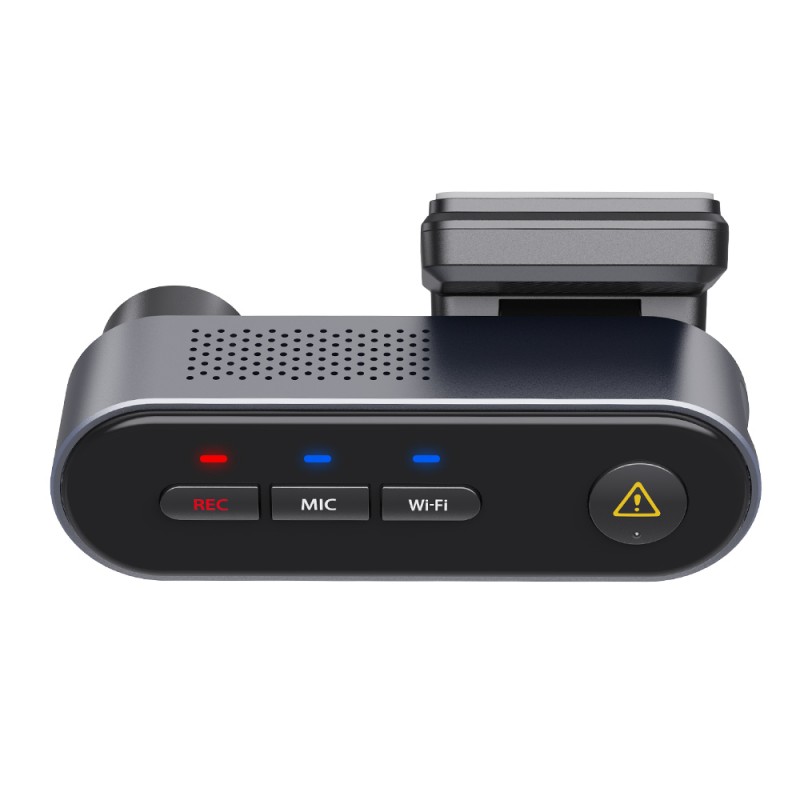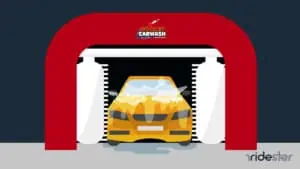As you are probably aware of by now, I love dash cams. Over the years, I have reviewed quite a few of them.
So when VIOFO reached out to me and asked if I wanted to test and share my thoughts on one their most popular models, the WM1, I jumped at the chance.
In my VIOFO WM1 review below, I will share what I liked and didn’t like about the product, as well as my unbiased thoughts on whether or not I think this camera is worth purchasing.
So without further ado, let’s jump right in.
Overview of the VIOFO WM1
The VIOFO WM1 is a relatively basic camera at a great price point – marketed to the masses.
Unlike other much pricier cameras that I’ve reviewed – such as the Nexar One – this camera comes with essential features, but not so many that you get overwhelmed.
The main selling points of this camera include:
1. Minimal, Concealed Design
This dash camera is small and compact. While not quite eligible for our list of hidden dash cams, you will probably notice how small the unit is when you take it out of the box.

As you can see, this is a very compact unit that will fit well within even the smallest windshields.
2. High Quality Video Recording
The VIOFO WM1 records in 2k quad HD, which ensures high-quality video. The company also bills a features called “Super Night Vision” that ensures footage taken in low-light situations is crisp and clear.
This is made possible by the Sony STARVIS sensor, which is becoming a fairly common image sensor for many dash cameras at this price point.
Related: Best dash cameras with night vision
3. Wi-Fi Enabled & App Controlled
The camera is wifi-enabled, and can be configured and controlled through a smartphone app that the company has developed for their products. Additionally, the company sells a separate Bluetooth remote control for the device.
4. Parking Mode
This camera comes equipped with parking mode, allowing customers to monitor their cars 24/7. This can include auto-event detection triggered by motion or the unit’s G-Sensor, or simply timelapse recording that rolls.
Using one of the three different parking modes, you are able to constantly record, ensuring that notable events are automatically recorded.
5. Built-in GPS
The built-in GPS logs important data like location, speed, and time. This key data can provide peace of mind in the case of an accident. The more data that is given to an insurance company that can provide a diver’s innocence, the better.
Product Specs:
- Image Sensor: Sony STARVIS CMOS Sensor 5MP IMX335
- Video Resolution: Quad HD (2560 x 1440P 30fps)
- Wi-Fi: 2.4GHz
- Display: No Screen
- Power Port: Type-C USB
- Storage: Up to external 256GB microSD Card
- Operating Temperature: -20℃ ~ 65℃ (-4℉ ~ 149℉)
- Storage Temperature: -20℃ ~ 70℃ (-4℉ ~ 158℉)
- Applicable Hardwire Kit Cable: HK4 (Not Included, Optional)
Unboxing the VIOFO WM1
VIOFO shipped me four separate items – the unit itself, a hardwiring kit, a wireless Bluetooth remote control, and a circular polarizing lens filter.
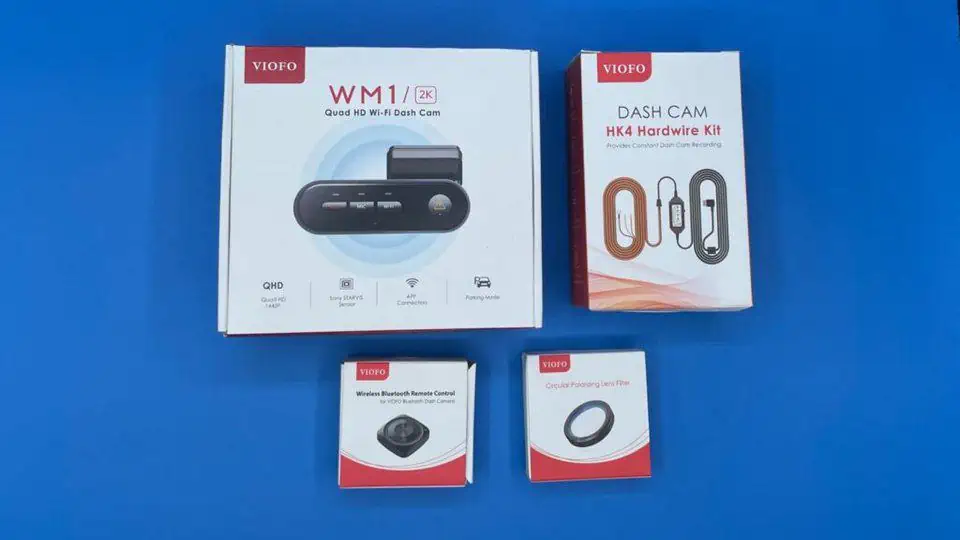
I unboxed the camera and lens filter, but this wasn’t a permanent install, so I didn’t need the hardwiring kit and I wasn’t super interested in the remote.
I like my dash cams to be as low-maintenance as possible, so the thought of using a remote to turn it on and off wasn’t one that I wanted to consider. I like getting in my car and the camera to just start recording.
When I took the camera out of the box, I got pretty much exactly what I expected.
The materials that camera was made from were decent, but at this price point, I didn’t expect anything more but also wasn’t disappointed with anything less.
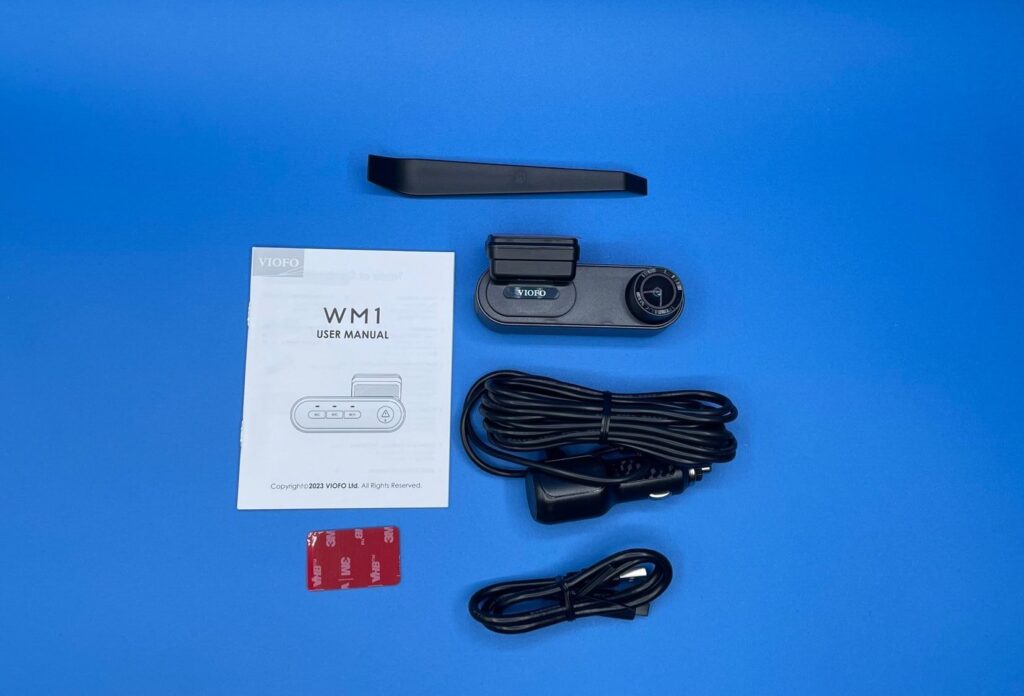
The camera was smaller than I expected, which is nice. I knew it was going to be small, but not this small. I could tell right away that it would fit well behind my rear-view mirror and not interfere with my line of sight while driving.
The next thing I noticed was that the camera didn’t come with an SD card. This is a similar situation to the Kingslim D4 that I recently reviewed.
I have no idea why dash cams don’t come with SD cards. I actually get fairly frustrated with this point. I have a ton of SD cards laying around because I review dash cams quite often, but the average person probably doesn’t have a surplus of SD cards like me.
While this is not a deal-breaker, it would be nice for dash cam manufacturers to throw one in. At the price point of a high-end camera like the Nexar One, they are included, but usually not at this price point.
Aside from that, I also noticed that the camera doesn’t have a screen. I personally like a screen with my dash cams, but forgoing a screen does save cost and space, so as long as you are aware of that beforehand, it is not a huge deal.
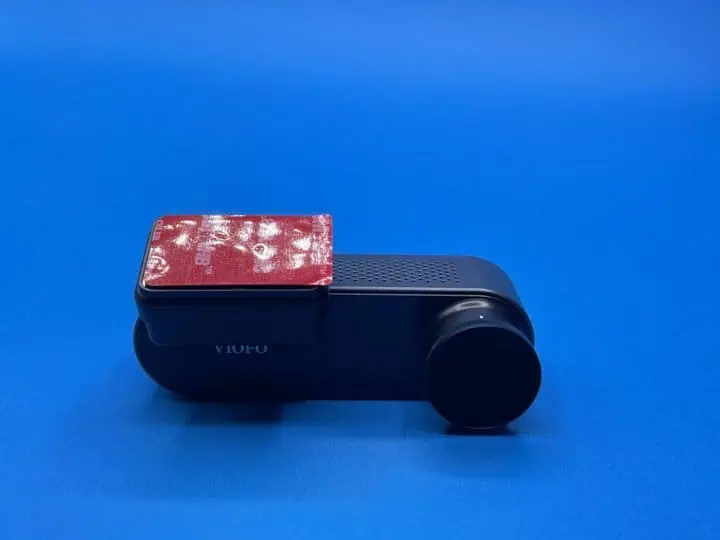
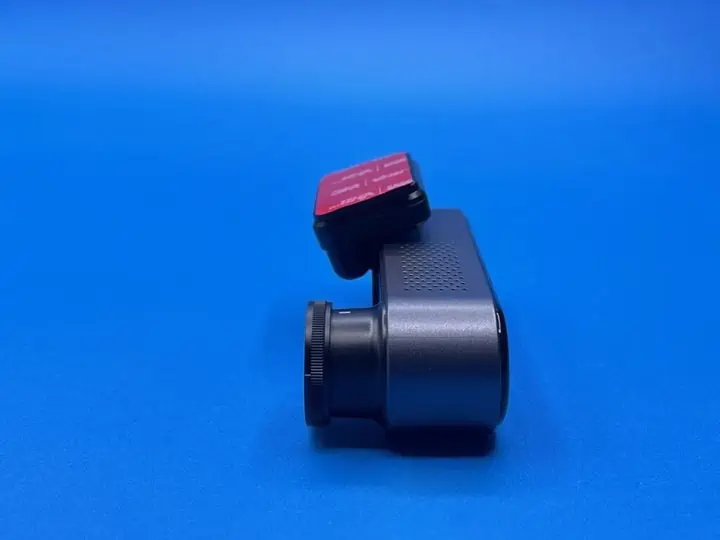
Setting Up the VIOFO WM1
I am fairly well-versed in the basics of dash cams, but setting up this camera was a bit trickier than I would have liked.
Many cameras allow you to format the SD card on the unit itself, which means a true plug-and-play operation. On this unit, however, you must format the SD card (that is not included) using the camera’s app or a computer.
Naturally, I tried to first install the app.
I tried to install the app and sync it to the camera, but after 10 minutes, I gave up. The system initially allowed me to pair the camera, but then the power cable accidentally came out and I was no longer able to detect the network and connect to it.
I had already wasted quite a bit of time trying to get the app to work, but finally got frustrated and just formatted the SD card in my computer and moved on.
Once I set the camera up, it was time to install it in my vehicle.
Installing the VIOFO WM1
Installing the camera was a pretty seamless experience.
The best place to put a dash cam is right in the front windshield, so that is where I installed this unit when I tested it.
One added touch was that the camera includes a clear static cling film that you can use to mount to the windshield. In my experience, if you don’t use this film, the cameras are VERY hard to remove.
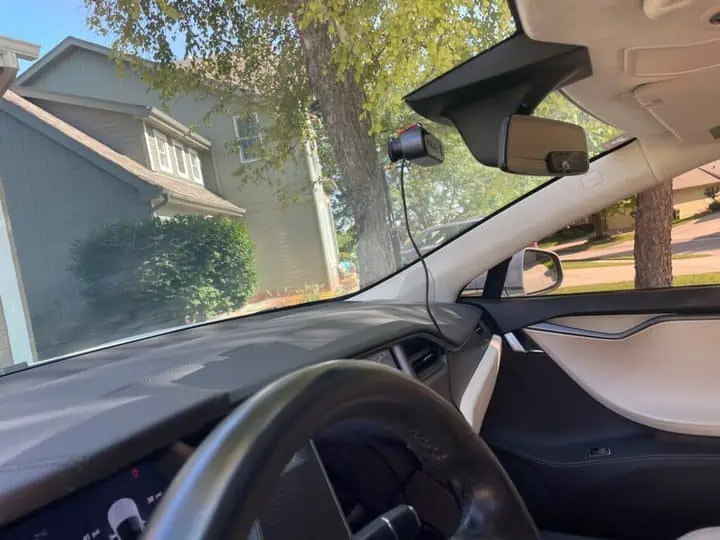
I thought this was a nice touch from the product team, so that I didn’t have to use the included plastic pryer tool.
While I had no issues with mounting my dash cam, I did notice that the camera doesn’t seem to rotate past 40 degrees. This could be problematic depending on the angle of your windshield.
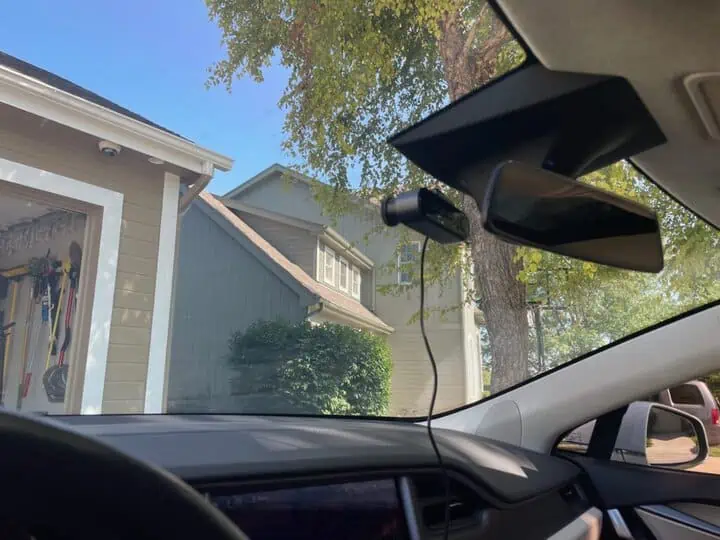
Lastly, the power cable was definitely long enough for me. As I said previously, I used the standard power cable. However, if I were to be mounting this for longer than just a test, I would use the hardwiring kit.
My Experience With the VIOFO WM1
After the unit was installed, I started driving around to test it out.
The first thing I noticed about the unit was the noises that it emits. For example, when powering on, the camera makes a strange noise to indicate that it is receiving power.
Let me tell you that the noise is very obnoxious, and I came to dread hearing it the longer that time went on.
Apparently you can disable this in the app, but since I could not get my app to properly work, I had to deal with the noise for the entire testing period.
I also took note of how long the camera took to kick on and start recording.
This unit seems to take quite a while to turn on and power itself up and start recording. It was probably a good 10 seconds between when I got in my car and started driving that this camera was fully powered on and recording.
Once it is up and running though, things are fairly hands-off and automatic. The camera will just do its thing and record to the SD card as you drive.
Here is a video that gives you an idea of the quality:
Getting the footage off the camera was pretty easy. You can either use the app to view and download the footage, or you can just rip it from the card.
It is almost always most efficient to use the card, so I rarely mess with transferring footage with an app. In this case, that is what I did.
It took only a few minutes to pull the footage from the card, and using my PC, I was able to easily look around in the files and view the footage.
Conclusion: Is the VIOFO WM1 Worth It?
Overall, this camera is of similar quality to others that I have tested at this price point. The image quality is decent and the overall experience of using the camera is fairly simple.
I think the real selling point that sets this unit apart from others is the size. Given how small the camera is, you can technically install it and sort of set it and forget it.
In addition, it has super capacitors, which are great for hot and cold weather on the more extreme ends of the spectrum.
However, I were personally paying for a camera myself, I would instead opt for a model that includes basic features like a screen and internal storage. The Kingslim D4 and D6 are great alternatives that do include these things.
While this unit is a decent unit overall, the lack of basic features that I use so much would make it hard for me to purchase this unit when I could easily go get another brand’s camera that comes with them – at the same price point.
Frequently Asked Questions
Have questions? We have answers. Find answers to some of the most commonly-asked questions about the VIOFO WM1 below.
Is VIOFO a Chinese Company?
Yes, VIOFO is a company with operations based in Shenzhen, China. With extensive direct access to Chinese-based manufacturing, the company is able to offer high-quality products at an affordable price point.


